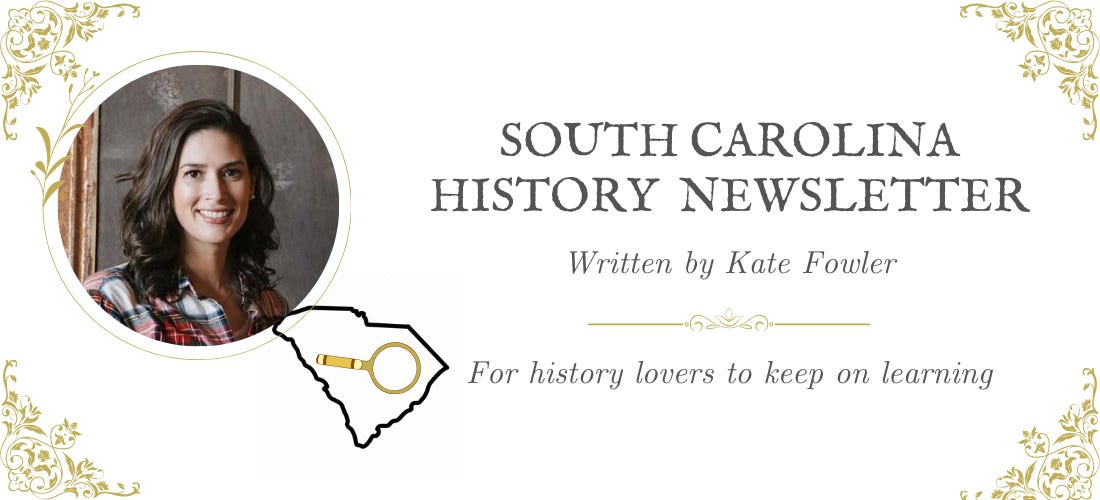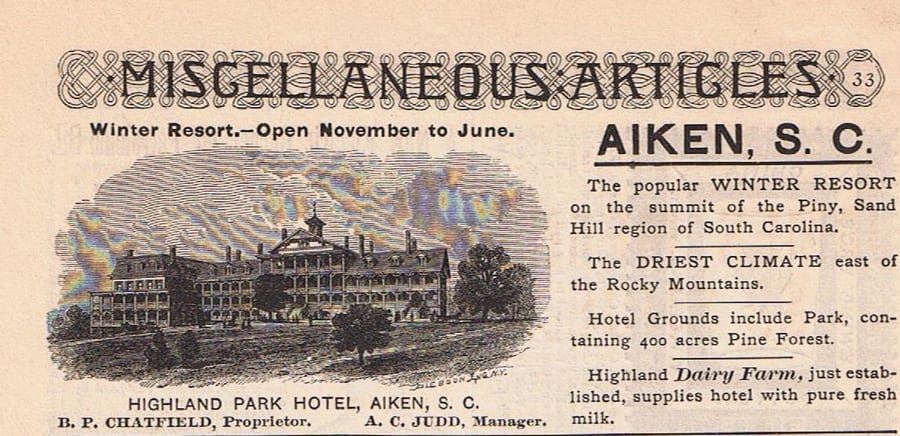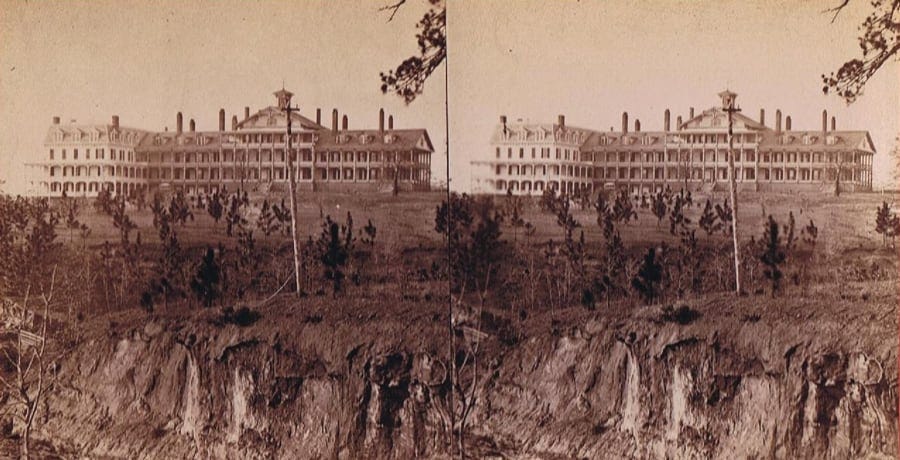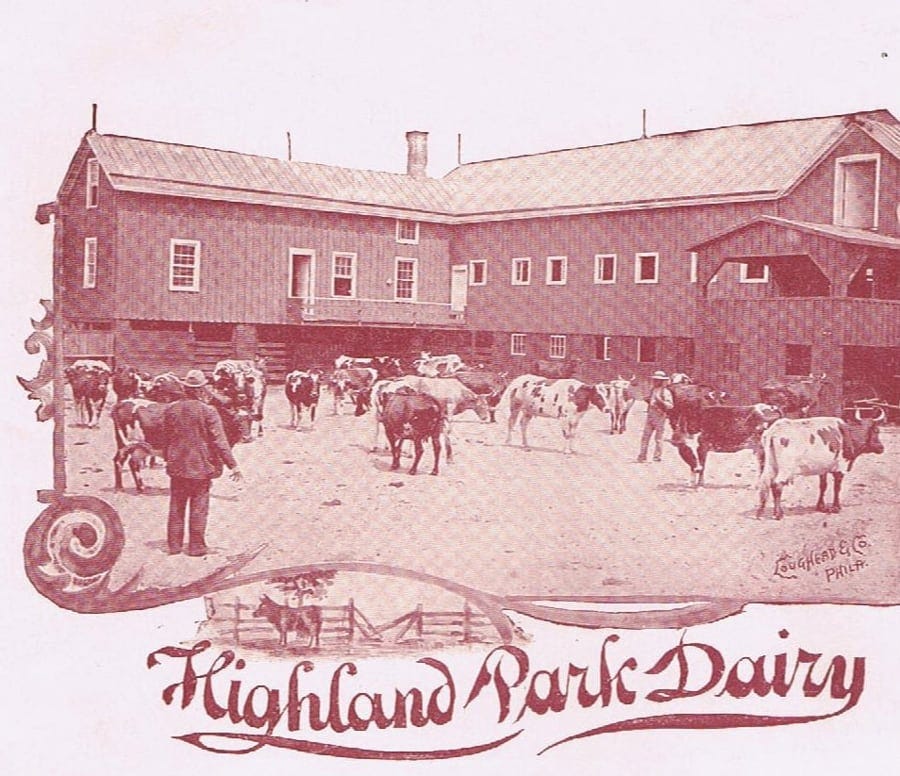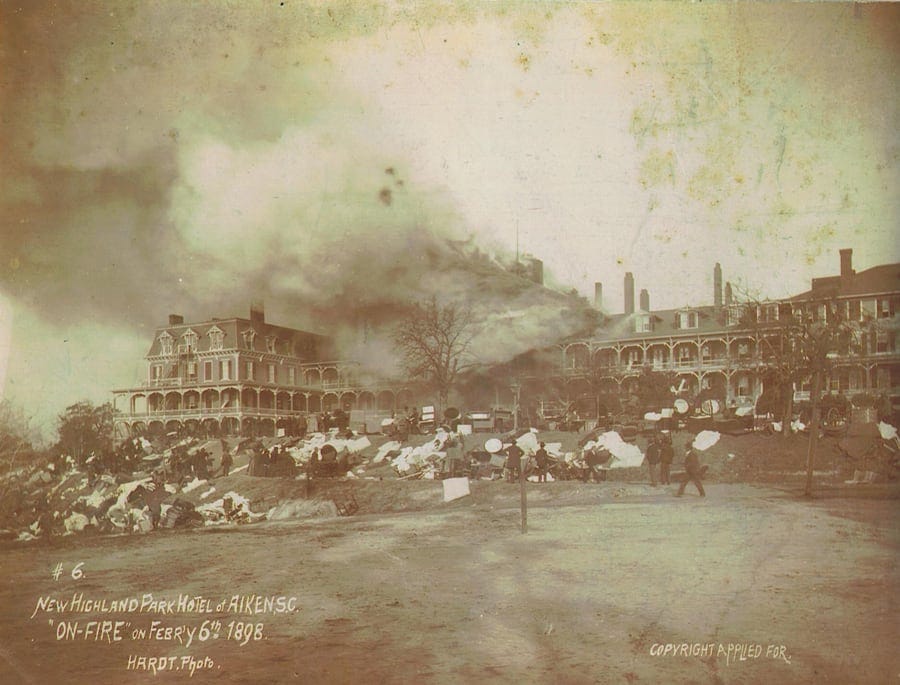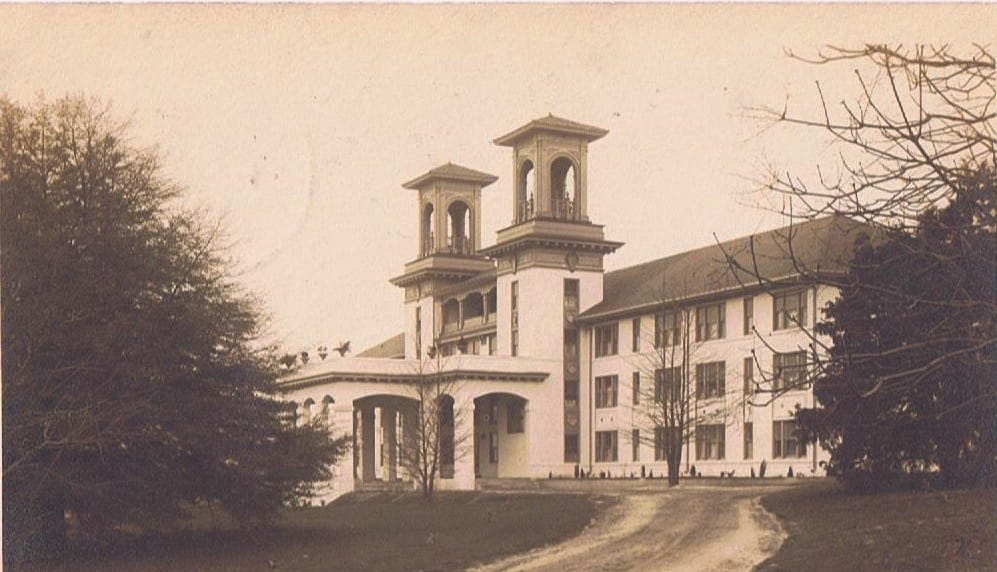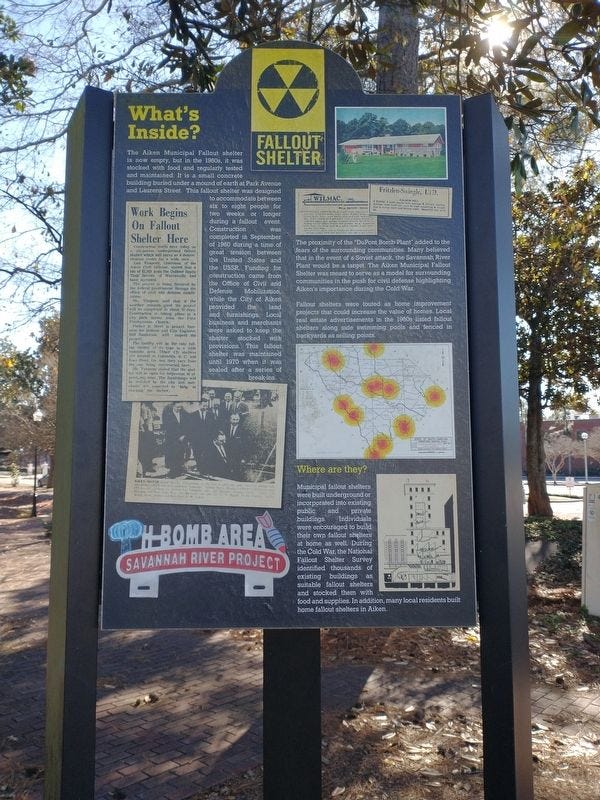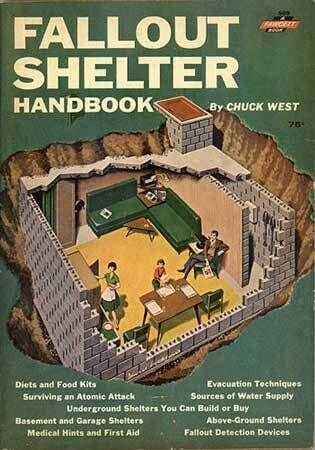#43: The Highland Park Hotel, Aiken's nuclear fallout shelter, and a workshop on "Early Spring Wild Edibles & Medicinals"
For South Carolina history lovers far and wide! Enjoy weekly SC history and upcoming SC historical events
Dear reader,
Welcome to Newsletter #43 of The South Carolina History Newsletter! I’m so happy you’re here.
I’d like to extend a special welcome to the following new subscribers of the SC History Newsletter community below! Woohoo!
j.colleenweatherford
jstorch1
jacciblue79
ablair_robinson
afruple
angieharmon1975
mpadala
I hope you enjoy today’s newsletter, and as always, please feel free to reply to this email with your ideas and suggestions on South Carolina history you’d like to learn more about. I’m only a click away.
Additionally, please join us & keep the conversation going by becoming a member of our SC History Newsletter Facebook Community here! I can’t wait to meet you.
And now, let’s learn some South Carolina history!
Yours truly,
Kate
(Writing from Greenville, SC)
➳ Featured SC History Event
Please enjoy our featured SC History Event below, and click here to visit my SC History Events Calendar that organizes all the upcoming SC history events I have discovered. Please let me know if you’d like to add an event to the calendar! Reply to this email or send me a note at schistorynewsletter@gmail.com.
Saturday, May 11th at 10:00 am - 2:00 pm | “Early Spring Wild Edibles & Medicinals” | Hagood Mill Historic Site | Pickens, SC | Tickets: $50
“In Plants are Medicine: Early Spring Wild Edibles & Medicinals, students will learn to identify common plants and trees that offer food, drink, and medicine. Wild foods are often nutritionally superior to conventionally grown and commonly consumed foods. In this class, students will learn how to use these beneficial wild edibles for their nourishing and healing benefits. Weather permitting, students will do some hands-on foraging to see how and where to find nutritional nuggets in plain sight. There will also be examples of the most helpful reference books for this region. Students will also do a make and take to get them started on the path to natural healing. The instructor will also offer premade herbal tinctures, dried medicinal herbs, and organically grown potted medicinal plants as an optional additional purchase.”
➳ SC History Fun Facts
I.
Did you know that Aiken’s first “grand hotel” suffered not one but two different devastating fires?
In the early 20th century, Aiken, South Carolina gained fame as a winter resort and an equestrian and sports lover’s paradise. Even better, the young city was “blessed with towering pines, sandy soil and a mild winter climate,” which attracted visitors for another good reason: their health. Aiken drew visitors from Charleston and the coast “to escape malaria and yellow fever” and tourists from the North to escape the bitter cold.
All these new visitors needed a place to stay, and the Highland Park Hotel became the solution. The hotel was Aiken’s first grand tourist hotel and stood atop the western end of Park Avenue on the ridge overlooking what is now the Aiken Golf Club. The hotel was built in 1869-70 and opened in 1870. It welcomed guests from November to early June.
Four years after opening, in 1874, the hotel became so popular that a “four-story Second Empire wing” wa added, which doubled the hotel’s capacity to 350 guests.
The hotel advertised “large rooms with sunny exposure, marble-top walnut furniture, and rooms lit with rosin gas and warmed with open fireplaces.” All rooms had electric bells. Hot and cold baths were available on each floor, and the halls and dining room were heated with steam. The hotel also boasted a men’s billiard room, a ladies’ billiard room, and a bowling alley. There was even a hydraulic passenger elevator. The grounds included tennis and croquet courts, stables and riding trails, walking trails, and a pavilion. The hotel also had its own dairy that supplied fresh milk and cream to the kitchens.
And then, disaster struck.
A fire destroyed the wooden hotel at the height of the season in February 1898. According to an exhibit at the Aiken County Historical Museum, accounts of the fire say that the “the blaze awakened the 168 guests, who were all able to escape safely with their bags, with the exception of one Bostonian who was shot and wounded by a hotel engineer.”
Not long after the 1898 fire, plans were put in place to construct a new hotel. In 1912, a group of Aiken businessmen formed the Real Estate and Fidelity Company to develop a resort hotel for winter guests at the same location. Several of the investors in the new Highland Park Hotel issued stock to build a golf course as an amenity to the hotel. The golf course lives on today as the Aiken Golf Club, formerly the Highland Park Country Club.
In 1915, a new Highland Park Hotel — with a Spanish Colonial Revival style — opened to the public. The hotel struggled during the Depression, and another devastating fire occurred in 1940. Sadly, the hotel was torn down shortly thereafter, but its laundry facility is now the clubhouse for the Aiken Golf Club.
Note from Kate: As a lover of grand historic hotels, oh how I wish the original Highland Park Hotel was still intact!
II.
Did you know that Aiken, SC constructed a Municipal Nuclear Fall Out Shelter during the height of the Cold War?
It is hard to fathom that not too long ago, the American people were living in a state of heightened emergency preparedness due to the invention of the atomic and hydrogen bombs. One of the main ways that cities and citizens prepared for a nuclear attack was through the building of fallout shelters.
Aiken, SC had a Municipal Fallout Shelter that was located at the intersection of Laurens Street SW and Park Avenue SW, and today is indicated by historical markers. The underground shelter was constructed in the 1960s and was designed to provide an emergency safe haven in the event of a nuclear attack on the United States. It is a small concrete building buried under a mound of earth.
The invention of the atom and hydrogen bombs in the mid-20th century created the potential for wide scale destruction. The bombs killed in two ways:
“First, they created a massive explosion many thousands of times more powerful than conventional bombs. Destruction was measured in miles not feet. Second, they produced radioactive particles known as fallout. This fallout was spread through the air and could contaminate large areas.”
The period after WWII through the early 1990s is known as the Cold War. Once wartime allies, the relationship between the United States and the United Soviet Socialist Republics (USSR) deteriorated shortly after WWII due to “conflicting ideologies and competition for global influence.” With the USSR’s test of an atom bomb in 1949, the United States “lost nuclear autonomy” and the threat of a Soviet attack became very real.
Construction of the Aiken Municipal Fallout Shelter was completed in September of 1960 during a time of great tension between the United States and the USSR. Across the country, in an effort to protect the public from a potential Russian nuclear attack, the Federal Civil Defense Administration and later the Office of Civil Defense, sponsored civil preparedness programs. These programs designated existing buildings as suitable shelters and educated the public about what to do in the event of a nuclear attack.
The Aiken Municipal Fallout Shelter is now empty, but in the late 1960s, it was stocked with food and regularly tested and maintained. It was designed to accommodate “between 6-8 people for 2 weeks or longer” during a fallout event. Funding for the construction of the Aiken Municipal Fallout Shelter came from the Office of Civil and Defense Mobilization, while the City of Aiken provided the land and furnishings. Local business and merchants were asked to keep the shelter stocked with provisions.
Aiken’s proximity to the Savannah River Site added to the fears of the surrounding communities. The site was built during the 1950s to refine nuclear materials for deployment in nuclear weapons (a topic for a future newsletter!). Many believed that in the event of a Soviet attack, the Savannah River Plant would be a target.
The Aiken Municipal Fallout Shelter became more than a shelter, but a call to action and “model for surrounding communities in the push for civil defense” that highlighted Aiken’s importance during the Cold War.
Realizing it would not be realistic to construct municipal shelters for every American, the U.S. Office of Civil Defense encouraged homeowners across the country to construct and stock their own home fallout shelters as part of a national civil defense effort. The Federal Housing Administration even “gave home improvement loans for fallout shelter construction.” Shelters could either be underground or built into the basement of interior of existing buildings. The structures had to be self-sufficient and provide livable habitation for 14 days or longer based on “the type, proximity, and severity of the attack.” Shelters needed thick concrete walls and hand-cracked ventilation systems to keep out radioactive particles. Occupants were made to stock food or supplies to last them two weeks or more. People also packed entertainment as well such as books, card games, and record collections.
At the time, fallout shelters were touted as “home improvement projects that could increase the value of homes.” Local real estate advertisements in the 1960s listed fallout shelters alongside swimming pools and fenced-in backyards as selling points for potential buyers.
Aiken’s Municipal Fallout Shelter today remains a relic of the area’s Cold War history and a reminder of Aiken’s role in the Cold War. Maintained during the height of the Cold War, the Aiken Municipal Fallout Shelter was sealed in 1970 after a series of break-ins and as international tensions eased.
More recently in 2017, Aiken hosted a “Nuclear Science Week” which concluded with an “Atoms in the Alley” festival downtown. For the event, the Savannah River National Laboratory produced a virtual tour of the Aiken Fallout Shelter, which was also displayed at the Savannah River Site Museum. City officials, museum staff, and local children “all took turns using the virtual reality headset to experience what it would be like in the fallout shelter.”
➳ Quote from an SC historical figure
I.
“What To Do When Signals Sound: If you should hear the Attack Warning Signal — unless your local government has instructed you otherwise — go immediately to a public fallout shelter marked like this, or your home fallout shelter. Turn on a radio, tune it to any local station that is broadcasting, and listen for official information… As mentioned before, not all communities in the U.S. have outdoor warning systems, and not all communities with warning systems have adopted the two “standard” warning signals… You should therefore find out now from your local Civil Defense Office what signals are being used in your community; what they sound like; what they mean; and what actions you should take when you hear them. Then memorize this information or write it down on a card to carry with you at all times. Also, post it in your home. Check at least once each year to see if there are any changes…It is possible — but extremely unlikely — that your first warning of an enemy attack might be the flash of a nuclear explosion in the sky some distance away… TAKE COVER INSTANTLY.”
—Excerpt from the handbook “In The Time of Emergency: A Citizens Handbook on Nuclear Attacks and Natural Disasters” (written March 1968 by the U.S. Department of Defense and the U.S. Office of Civil Defense) which was a resource provided to Aiken residents for emergency preparedness
Sources used in today’s newsletter:
We Are Aiken County: Highland Park Hotel was Aiken’s ‘first grand hotel’
Atoms in the Alley Festival celebrates Aiken's nuclear history
I always want to improve my work. Answer the poll below to give me your review of today’s newsletter. I also welcome your suggestions for new content! Simply reply to this email with your ideas. Thank you!




